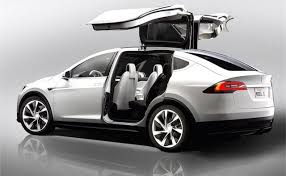batteries vary in size
Oil and gas companies are currently investing heavily in electric vehicle charging companies
 For decades, oil and gas companies and utilities have refused to accept electric vehicles as a given. Now oil and energy giants are becoming part of the “new fuels”industry.
For decades, oil and gas companies and utilities have refused to accept electric vehicles as a given. Now oil and energy giants are becoming part of the “new fuels”industry.
According to forecasts, more than 350 new models of electric vehicles will appear by 2025. Global demand for gasoline will peak around 2021, thanks to improved fuel efficiency. Wood Mackenzie predicts that infrastructure investment in the US will exceed $ 18 billion per year in equipment, installation, operation and services by 2030. China is expected to have three times more energy demand from electric vehicles by then. Continue reading
All official electric vehicles of Ukraine: prices, specifications, specifications
 The level of popularity of electric vehicles in Ukraine and legislative initiatives that contribute to the further popularization of eco-friendly cars in the country, are increasingly forcing dealers to think about the official import of electric cars, creating them equal to the ice-car conditions for the sale, warranty and service. Already now a number of importers officially sell models of electric vehicles in Ukraine and further plan to expand their representation in the market.
The level of popularity of electric vehicles in Ukraine and legislative initiatives that contribute to the further popularization of eco-friendly cars in the country, are increasingly forcing dealers to think about the official import of electric cars, creating them equal to the ice-car conditions for the sale, warranty and service. Already now a number of importers officially sell models of electric vehicles in Ukraine and further plan to expand their representation in the market.
What electric cars can be bought in Ukraine officially in 2019?
BMW
Electric car BMW i3 2019 (42.2 kWh)
BMW i3 2019 (42.2 kWh) Continue reading
Used batteries from electric vehicles can disrupt the energy sector and create value for energy storage
 The battery does not expire after it has already exhausted its initial use in an electric vehicle. Batteries have great potential for reuse in stationary energy storage systems. In addition, by reducing the cost of energy storage, they can help to integrate more renewable energy sources into the network.
The battery does not expire after it has already exhausted its initial use in an electric vehicle. Batteries have great potential for reuse in stationary energy storage systems. In addition, by reducing the cost of energy storage, they can help to integrate more renewable energy sources into the network.
Lithium-ion batteries used in electric vehicles, which are usually designed for a decade (8 years or mileage up to 160,000 km). But even after 10 years of operation in electric vehicles, batteries can be reused in markets that require stationary energy storage with 100-300 cycles per year. Alternative re-use is mass utilization, which is possible in most of the regions in accordance with the rules of occupational health and safety, or disposal, which may make sense for battery manufacturers who want to get valuable metals, such as cobalt and Nickel, and which can achieve competitive costs for processing. Continue reading




